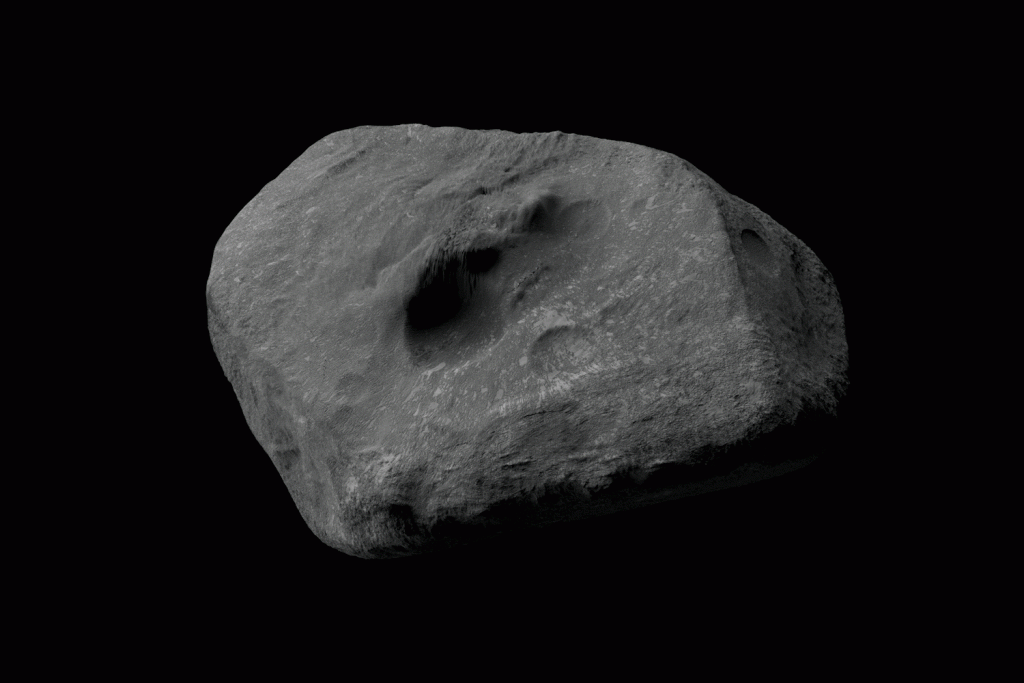A newly discovered asteroid is on track for a close brush with Earth—and it might even slam into the Moon. Recently, astronomers got a closer look at the giant space rock, revealing its violent origin story.
Using the Keck Observatory on Maunakea, Hawaiʻi Island, a team of astronomers was able to identify the physical properties of asteroid 2024 YR4 and uncover its potential origin. The menacing asteroid may have broken off from a larger space rock following a collision. It also likely originated from an asteroid family in the main asteroid belt between Mars and Jupiter—an unlikely place for Earth-crossing asteroids to come from.
“The shape of the asteroid provides us with clues as to how it formed, and what its structural integrity is,” Bryce Bolin, research scientist with Eureka Scientific, said in a statement. “Knowing these properties is crucial for determining how much effort or what kind of technique needs to be used to deflect the asteroid if it is deemed a threat.” This research is set for publication in The Astrophysical Journal Letters.
The Asteroid Terrestrial-impact Last Alert System (ATLAS) in Chile discovered asteroid 2024 YR4 on December 27, 2024. Shortly after its discovery, NASA designated it a potentially hazardous object, with a nearly 3% chance of hitting Earth on December 22, 2032. After giving us quite the scare (or something to look forward to), NASA removed 2024 YR4 from its naughty list when calculations showed that the asteroid had a near-zero chance of hitting Earth.
The Moon, however, is still not safe from the flying space rock. NASA’s Center for Near Earth Object Studies recently updated the odds of asteroid 2024 YR4 hitting the Moon, raising the risk from 1.7% in late February to 3.8% based on recent data collected by the Webb telescope and observations from ground-based telescopes.
If it does hit, the asteroid will not alter the Moon’s orbit, and instead leave behind a fresh and sizable impact crater. “It’s one of the largest objects in recent history that could hit the Moon,” Bolin, the lead author of the new study, said. “If it does, it would give scientists a rare chance to study how the size of an asteroid relates to the size of the crater it creates—something we haven’t been able to measure directly before.”
Asteroid 2024 YR4 is estimated to be between 174 and 220 feet (53 to 67 meters) wide—about the size of a 10-story building. It has a flattened, irregular shape, and is about the same density as a solid rock, according to the new study. The asteroid spins in a retrograde direction once every 20 minutes.
Larger asteroids that are 100 meters (328 feet) or more are often called “rubble piles,” and are the remaining fragments that broke off from a larger parent asteroid in the aftermath of a collision. Rubble piles are, as the name suggests, broken-off pieces that clump together to form a loosely held asteroid. There are often large boulders that sit at the top of rubble pile asteroids. At its smaller size, 2024 YR4 may have once been a boulder that sat on the surface of a large rubble pile asteroid, according to the study.
The team behind the study also compared the newly discovered asteroid’s orbit with that of near-Earth objects, and found that 2024 YR4 likely originated between the inner and central main belt. Earth-crossing asteroids—those whose orbits intersect with Earth’s—often originate from the inner region of the main belt. As their orbits evolve, the asteroids are then kicked off onto a trajectory that sends them toward Earth.
The asteroid may have originated in the central main belt and drifted inward due to its retrograde spin, meaning it moves in the opposite direction of most objects in the solar system. That could explain why 2024 YR4 is unlike most other celestial visitors that cross Earth’s path.
When it was first spotted, asteroid 2024 YR4 was 515,116 miles (829,000 kilometers) away from Earth. Since then, the space rock has moved away from us, and its next close approach won’t be until December 2028. Ground-based telescopes from the International Asteroid Warning Network have been tracking the asteroid, but it will be too faint to observe until June 2028, according to NASA. That’s why it was crucial to direct Webb’s attention toward the asteroid, as well as the Keck Observatory telescopes, to gather as much data as possible before it is too difficult to spot.
“The data from our study will be used to assess the physical properties and shapes of potentially impacting asteroids, providing a great test case on the kind of rapid response observations that are necessary to characterize a potential threat like this object,” Bolin said. “The physical information about an asteroid’s physical property (rubble pile vs solid rock) is crucial for planning mitigation efforts if necessary.”




